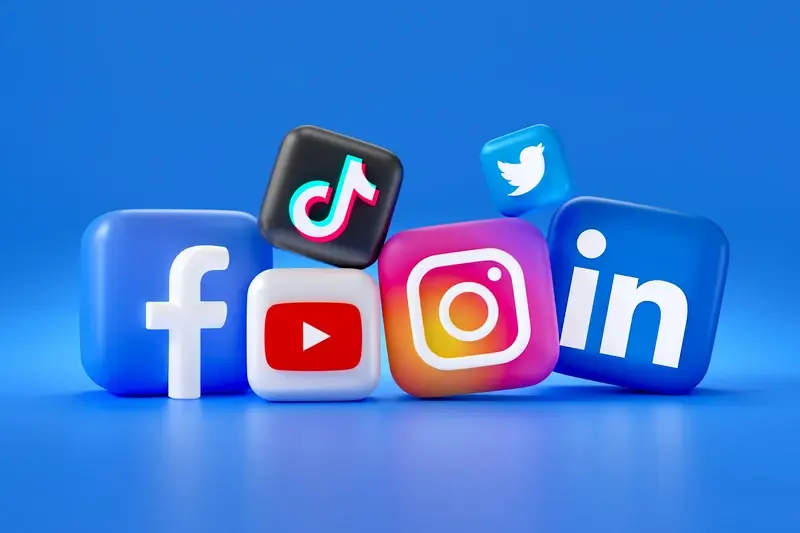What's The Typical Customer Acquisition Cost For Apps?
Every day, millions of pounds are spent trying to convince people to download apps they'll probably delete within a week. That's the brutal reality of mobile app marketing—and it's exactly why understanding customer acquisition cost is so important for anyone building an app. Whether you're a startup founder with a brilliant idea or a marketing director at an established company, knowing how much it costs to acquire each user can make or break your entire strategy.
Customer acquisition cost, or CAC as we call it in the industry, is simply how much money you spend to get one new user to download and use your app. Sounds straightforward enough, right? But here's where it gets interesting—this single metric can tell you whether your app will succeed or fail before you even launch it.
The difference between a profitable app and an expensive mistake often comes down to understanding your true acquisition costs before you start spending big on marketing.
Throughout this guide, we'll break down everything you need to know about mobile app acquisition costs. From understanding the basics to calculating your own numbers, we'll cover the marketing metrics that matter most and help you avoid the costly mistakes that drain budgets faster than you can say "install campaign". By the end, you'll have a clear picture of what realistic user costs look like in your industry and how to optimise your approach accordingly.
Understanding Customer Acquisition Cost Basics
Customer Acquisition Cost—or CAC as we call it in the industry—is simply how much money you spend to get one new user to download and use your app. Think of it like this: if you spend £100 on advertising and get 10 new users, your CAC is £10 per user. Simple maths, right?
Now, I've worked with hundreds of app projects over the years, and I can tell you that understanding your CAC is absolutely fundamental to building a successful app business. Without knowing this number, you're basically flying blind. You might be spending £50 to acquire a user who only brings you £20 in revenue—that's a recipe for disaster!
What Counts as Acquisition Cost?
Your CAC includes all the money you spend trying to get new users. This covers advertising costs, marketing team salaries, promotional campaigns, and even the coffee your marketing team drinks during those late-night strategy sessions (well, maybe not the coffee, but you get the idea).
The Four Main Components
- Paid advertising spend (Google Ads, Facebook Ads, etc.)
- Marketing team salaries and contractor fees
- Content creation and creative development costs
- Marketing tools and platform subscriptions
Getting your CAC calculation right from the start will save you thousands of pounds down the line. Trust me on this one—I've seen too many promising apps fail because they couldn't control their acquisition costs.
What Influences App Acquisition Costs
After years of working on mobile app projects, I've learnt that customer acquisition costs aren't just random numbers—they're shaped by several key factors that every app owner needs to understand. The most obvious one is your target audience. If you're trying to reach teenagers who love gaming, you'll face different costs than if you're targeting busy parents looking for productivity tools.
Your app category plays a huge role too. Gaming apps typically cost more to acquire users because the competition is fierce and the marketing budgets are massive. Finance apps also tend to have higher acquisition costs because users are naturally more cautious about downloading apps that handle their money.
Key Cost Drivers
- Target audience demographics and behaviour
- App category and competition levels
- Geographic location of your users
- Seasonality and timing of campaigns
- Quality and relevance of your app store listing
- User lifetime value expectations
Geographic location makes a massive difference to your marketing metrics. Acquiring users in the United States or United Kingdom will cost significantly more than targeting users in developing markets. This isn't just about advertising costs—it reflects spending power and market saturation.
Focus on understanding your ideal user first, then work backwards to determine which acquisition channels will give you the best user costs for your specific audience.
Industry Benchmarks and Average Costs
Right, let's talk numbers—because that's what you're really here for, isn't it? After working with clients across different sectors for years, I can tell you that customer acquisition costs vary wildly depending on what type of app you're building.
Gaming apps typically see the lowest acquisition costs, often ranging from £1-3 per install. Makes sense really; people love downloading games and the barrier to entry is pretty low. E-commerce and shopping apps sit in the middle ground at around £3-8 per user, whilst finance and banking apps can cost anywhere from £20-50 per acquisition. Dating apps? They're expensive—sometimes hitting £15-25 per user because the competition is fierce.
Platform Differences Matter
Here's something interesting: iOS users generally cost more to acquire than Android users, but they tend to spend more money once they're using your app. We're talking about 20-30% higher acquisition costs on iOS, but the lifetime value often makes up for it.
Geographic Variations
Location plays a huge role too. Acquiring users in the US or UK will cost significantly more than targeting users in emerging markets. The same install that costs £5 in London might only cost £1 in Mumbai—but the revenue potential differs accordingly.
Measuring and Calculating Your CAC
Right, let's get into the nitty-gritty of actually working out your customer acquisition cost. I've seen too many app developers flying blind here—they're spending money on marketing but have no clue what each user is actually costing them. It's a recipe for disaster, trust me.
The basic formula is straightforward: take your total marketing spend and divide it by the number of users you acquired. Sounds simple enough, right? Well, not quite. The devil is in the details, and there are several ways you can calculate this depending on what you're trying to measure.
The Basic CAC Formula
Your simplest calculation looks like this: CAC = Total Marketing Spend ÷ Number of New Users. But here's where it gets interesting—you need to decide what counts as "marketing spend." Are you including staff salaries, creative costs, platform fees? Most mobile app developers I work with include everything: ad spend, team costs, tools, and any third-party services.
The biggest mistake I see is when developers calculate CAC using only their ad spend and forget about all the hidden costs that add up behind the scenes
Time Periods Matter
You'll want to track your CAC over different time periods—daily, weekly, monthly. This helps you spot trends and seasonal patterns. Gaming apps often see spikes during holidays, whilst productivity apps might perform better during back-to-school periods. I always recommend calculating both blended CAC (across all channels) and channel-specific CAC so you know which marketing channels are actually working for your mobile app.
Free vs Paid Acquisition Channels
Right, let's talk about the elephant in the room—should you spend money acquiring users or try to get them for free? I wish I could give you a simple answer, but like most things in app development, it depends on your situation.
Free channels are tempting because, well, they're free! App Store Optimisation (ASO) is your best friend here—getting your app to rank higher in search results without paying a penny. Social media marketing, content creation, and referral programmes also fall into this category. The catch? They take time to build momentum, and time isn't always something you have plenty of.
The Reality of Paid Channels
Paid channels like Facebook Ads, Google Ads, and Apple Search Ads give you immediate results. You can literally start getting downloads within hours of launching a campaign. But here's the thing—they can get expensive quickly if you don't know what you're doing.
Most successful apps use a mix of both approaches. You might start with organic growth whilst building your paid strategy, then scale up advertising once you understand your numbers better.
Which Should You Choose?
The best acquisition channels for your app will depend on several factors:
- Your budget and timeline
- Your target audience and where they spend time
- The complexity of your app and conversion process
- Your team's expertise in different marketing channels
- The competitive landscape in your category
My advice? Start with the channels you can execute well rather than the ones that look most attractive on paper. A well-executed organic strategy will always beat a poorly managed paid campaign.
Optimising Your Acquisition Strategy
Right, so you've got your mobile app numbers sorted and you know what you're spending on user costs—now comes the fun part: making those marketing metrics work harder for you. This is where most app developers get a bit overwhelmed, but honestly, it doesn't have to be complicated.
The secret to lowering your acquisition costs isn't about cutting budgets; it's about being smarter with where you spend your money. I've seen apps slash their costs by 40% just by shifting focus from channels that looked good on paper to ones that actually converted.
Focus on Your Best Performing Channels
Start by looking at which channels bring you the highest quality users—not just the most users. That Facebook campaign might be bringing in hundreds of downloads, but if those users delete your app after two days, you're wasting money. Look for channels where users stick around and actually use your mobile app.
Test Different Creative Approaches
Your ad creative can make or break your costs. Run A/B tests on everything: headlines, images, video content, and call-to-action buttons. Small changes can lead to massive improvements in your marketing metrics.
- Test different messaging angles for your target audience
- Try various visual styles and formats
- Experiment with different landing pages
- Monitor performance across different demographics
Track your lifetime value to acquisition cost ratio—aim for at least 3:1 to ensure profitable growth.
Remember, optimisation is an ongoing process. What works today might not work next month, so keep testing and adjusting your approach based on real data.
Common Mistakes That Increase Costs
I've watched countless app developers make the same costly mistakes when it comes to customer acquisition—and honestly, most of them are completely avoidable. The biggest one? Trying to target everyone at once. When you cast your net too wide, you end up spending money on people who will never actually use your app.
Another mistake I see all the time is ignoring the data. You might think your Instagram ads are performing brilliantly because they're getting loads of likes and comments, but if those users aren't converting into paying customers, you're just burning money. Always track your actual conversion rates, not just vanity metrics.
Poor Timing and Impatience
Many developers launch their acquisition campaigns before their app is ready. If your app crashes or has major bugs, you'll pay to acquire users who will immediately delete it and leave terrible reviews. That's money down the drain plus damage to your reputation.
Impatience kills budgets too. Customer acquisition takes time—especially for complex apps. If you panic and constantly change your strategy every few days, you'll never give any approach enough time to work properly. Stick with your plan for at least a few weeks before making major changes.
Conclusion
After eight years of helping clients build and launch mobile apps, I've seen countless businesses struggle with user costs simply because they didn't understand their marketing metrics properly. The truth is, there's no magic number for customer acquisition cost—it depends entirely on your app category, target audience, and business model.
What matters most is finding the right balance between spending enough to grow your user base and keeping costs low enough to maintain profitability. The companies that succeed are those that track their numbers religiously, test different channels, and aren't afraid to pivot when something isn't working.
Remember, a high CAC isn't automatically bad if your lifetime value is even higher. I've worked with apps that spent £50 to acquire a user but made £200 from them over time—that's a winning strategy. Conversely, I've seen apps celebrate a £2 acquisition cost when their users churned after a week.
The key takeaway? Start measuring your customer acquisition cost from day one, benchmark against your industry, and never stop optimising. Your mobile app's success depends on understanding these numbers and acting on them quickly.
Share this
Subscribe To Our Learning Centre
You May Also Like
These Related Guides

How Much Should I Budget For App Marketing?

What's the Right Budget Split for My App Marketing?



